Pico, the mountain island

With an area of 448km2, the Island of Pico is the second largest in the Azores and one that is home to Portugal’s highest mountain, also called Pico, at 2,351m above sea level. Often referred to as the Mountain Island, Pico forms one of the points of the so-called "triangle islands", being the most southerly of the central group of the archipelago, and just 6km from Faial.
Pico’s hot, dry climate, together with the mineral-rich lava soil and the organisation of the land in a stunning mosaic of black stone - the "currais" (plots) – has meant a growing success in the cultivation of vines, predominantly of the Verdelho variety. Gradually, the wine and the brandy became more and more appreciated both on and outside the island, and Verdelho achieved international fame. It has long been exported to Europe and America, and at the time was even a feature on the dining table of the Russian Tsars.
The extensive lava fields that dot the island’s landscape, which the local population calls "lajidos" or "cookie lands" form the Landscape of the Pico Island Vineyard Culture, declared World Heritage by UNESCO in 2004. Lajido da Criação Velha and Lajido de Santa Luzia are the best examples.
On the black lava ground, the "rilheiras" - ruts left by the wheels of ox carts carrying the grapes and barrels – are worth seeing, and in the harbours and coves along the coast the "rola-pipas" - ramps excavated to make it easier to roll the barrels of wine to the boats, still remain as witnesses to the wine industry.
The immense volcanic cone of Pico Mountain, the third largest volcano in the Atlantic, imposes itself on the island’s landscape. Inside its main crater there is a cone of lava designated Piquinho, on top of which fumaroles permanently vent steam to remind us of its volcanic nature. At around 1250 metres above sea level, where the footpaths to the Mountain start to climb, you can get a view of much of the island, as well as the neighbouring Faial and São Jorge. The climb to the top is tiring, but rewarded by fantastic, unique panoramic views which, on a clear day, offer the additional reward of a glimpse of the islands of Graciosa and Terceira.
It is on Pico that one of the largest visitable lava tubes in the world is found, in the Gruta das Torres, which stretches for five kilometres and is embellished by various types of lava stalactites and stalagmites, and ridged walls.
For lovers of geotourism, there are other must-see sites to visit: the Furnas (geothermal sites) of Frei Matias, Silveira and Montanheiros; the “Mysteries” of Santa Luzia, Prainha and S. João, formed by lava from volcanic eruptions that occurred in the sea and were joined to the island; and also the Arcos do Cachorro, an impressive grouping of lava perforated by numerous tunnels and caves through which the sea passes creating a maelstrom.
Other places to visit are the Capitão, Caiado and Paul lagoons, and also the Terra Alta Viewpoint on the road that circles the island to the North, from which you can see the island of São Jorge, and the landscape that Pico’s wealth of forest offers.
Pico is a land with a strong whaling tradition. The island is divided into 3 districts, Madalena, São Roque and Lajes, and like the other islands in the Azores, its architectural heritage is concentrated mainly in the churches and chapels in the various parishes: the Churches of Santa Maria Madalena, in Vila Madalena, São Roque and the Convent and Church of São Pedro de Alcântara in São Roque do Pico, and Nossa Senhora da Conceição and the Chapel of São Pedro in Lajes; but there are also many others.
The Pico Museum is also worth a visit, with its three divisions: the Whaling Museum in Lajes, the Whaling Industry Museum in São Roque, and the Wine Museum, in Madalena, each of them portraying an important period in the history of Pico. The Wine Museum is housed in the former Carmelites Convent, and offers visits to the vineyards, wine tasting, and in September, the opportunity to participate in the grape harvest.
Besides its natural wealth, Pico also offers a fine gastronomic heritage, very much based on fish and seafood, whose highlights are the famous Caldeiradas (bouillabaisses), stewed octopus with vinho de cheiro, sausage with yams, molha de carne (a roast meat speciality) and fish soup. Its figs are also famous, with their bright red flesh, and the honey produced from frankincense flowers and Pico Cheese – soft cheese from cow's milk (particularly São João and Arrife). All washed down, of course, with Verdelho wine, or with the Island’s highly prized red and white wines.
Pico is a land with a strong whaling tradition, and various handcrafted items of whale bone and tooth, as well as straw hats, flowers from fish scales and wooden miniatures of whaling boats are all good suggestions for souvenirs.




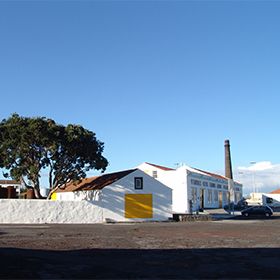
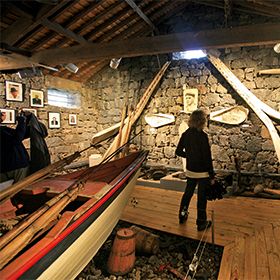

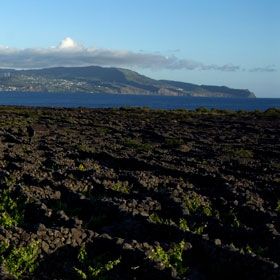
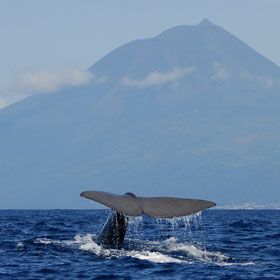
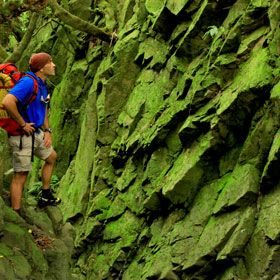





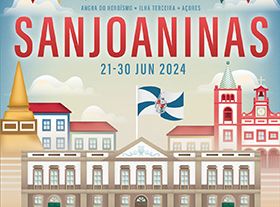
 Explore
Explore 
 Remember and Share
Remember and Share 


